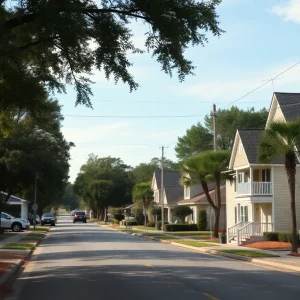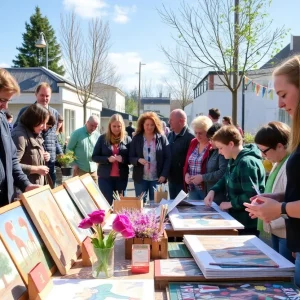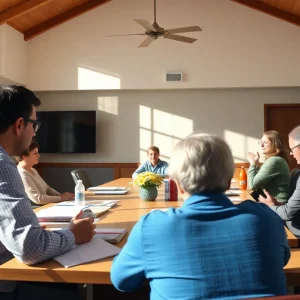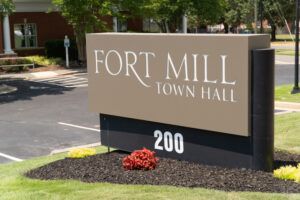Greenwood: A Charming Town with a Rich Historical Background
Greenwood, a quaint and slow-paced town in South Carolina, has an atmosphere that’s as friendly as its locals. Those who have lived their lives here describe it as a place with a rich history and a storied past that’s deeply rooted in the nation’s early days.
Revolutionary Roots
“Oh, the Revolutionary War,” said Karen Jennings, Executive Director of the Museum and Railroad Historical Center. Greenwood County holds a special place in American history. It’s home to Star Fort, a national historic site where the first land battle south of New England was fought.
Construction of Star Fort commenced in 1780—a striking display of history built by soldiers and slaves five years after the Revolutionary War began. The fort is distinctive in its star shape, a strategic design meant to make defense easier. “The shape of the fort is actually in the shape of a star which was to make defending it easier so you wouldn’t have just this long straight line that would be easy to bombard,” Jennings explained.
Mill Villages and Main Streets
Greenwood is also known for its unique mill villages. These brick structures with slate roofs have stood the test of time and speak volumes about the craftsmanship of the past. “They are excellent quality, modestly priced, and they gone be here for a good long while,” Jennings said with a knowing smile.
Another pride point for residents is that Greenwood is home to the widest main street in the United States. This feature owes its existence to the numerous railroads crisscrossing downtown, essentially creating two main streets.
A Town Built by the Rails
“Greenwood was a railroad town,” Jennings said. The town’s first rail line opened in 1852 and quickly became instrumental in stimulating textile manufacturing, which became the backbone of the local economy. “The railroad enabled the textile mills to carry their goods across the country and to prosper,” Jennings added.
The railroads were more than just tracks and trains—they were the lifeblood of Greenwood. “Business was dependent upon trains,” Jennings stated matter-of-factly. In pre-truck and pre-modern-road days, trains were the only means to deliver goods to the market. Cheap and convenient, trains were also the main method of transportation for people.
Dining and Relaxing en Route
Traveling by train back then was a whole different experience. “This was the original coverings on these seats,” Jennings pointed out, talking about the train’s nostalgia. People didn’t just travel; they dined and relaxed. Trains had kitchens where a range of delicious dishes could be prepared. “I say dine on purpose because this was not just plain ole eating. One of the competitive advantages the trains used for their advertising was they could have a fine meal while they were on route,” Jennings said.
Moreover, the trains had settings for socializing and relaxation. “You could retire here and the gentleman would have a post-prandial cigar and a drink,” Jennings illustrated. Imagine sitting in lounge chairs, being served a drink, and just enjoying the ride.
From 300 to 20,000
Greenwood’s history, built brick by brick along the railroad tracks, has contributed significantly to the town’s growth. From a population of 300, it has now grown to more than 20,000. Thousands of visitors come each year to check out the trains and learn more about how this small town developed.
For history buffs and curious souls, the Greenwood Museum is open from Wednesday through Friday, 10 a.m. to 5 p.m., and the Railroad Historical Center welcomes visitors on Saturdays from 10 a.m. to 4 p.m. Karen Jennings sums it up perfectly: “It is amazing to see how clever people were.”
Final Words
If you’re ever in South Carolina, make sure to swing by Greenwood. Not just to see the historical sites, but to experience the friendly atmosphere and the rich tapestry of stories that make this town truly special.




























